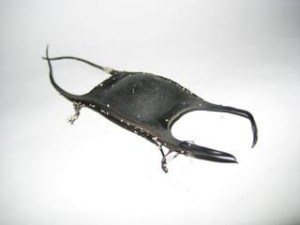
In isolated spots in the Bering Sea, there are fields of so-called ‘mermaids’ purses.’ Any beachcomber would recognize them — small rectangular pods with pointy corners. They’re the protective casing that surrounds the fertilized eggs of skates, and in some underwater nurseries there are hundreds of thousands of them.
Skates have healthy population levels in the Bering Sea, but their unusual breeding habits could make them susceptible to human disruption. That’s why at this week’s North Pacific Fishery Management Council in Portland, the body decided to designate six of the nurseries in the Eastern Bering Sea as ‘Habitat Areas of Particular Concern.’
Councilor Bill Tweit says the designation acknowledges their significance.
“In establishing these as HAPCs, we in essence flag that these areas are potentially vulnerable to a broad range of disturbances, and requesting [sic] that decision-makers involved in other planning processes pay attention to these areas and pay attention to the unique attributes of those and consider the potential disturbances.”
In particular, Tweit singled out cable-laying and seismic testing. But he and the rest of the council rejected a proposal to ban fishing activities in the vicinity of the nurseries. The general consensus was that there’s too much scientific uncertainty to support a ban.
But the Council did agree to make researching the nurseries a priority. They’re still a relative unknown, even though interest in them has grown recently. In particular, scientists have questions about how many nurseries there are in the Eastern Bering Sea. The council’s scientific advisory group thinks there are probably less than 20, but that figure is disputed.
The National Marine Fisheries Service will be responsible for monitoring the six selected nurseries, although the exact scope of that work is yet to be defined.
Skate are an important food source for many species in the Bering Sea, including sea lions, halibut and cod.




